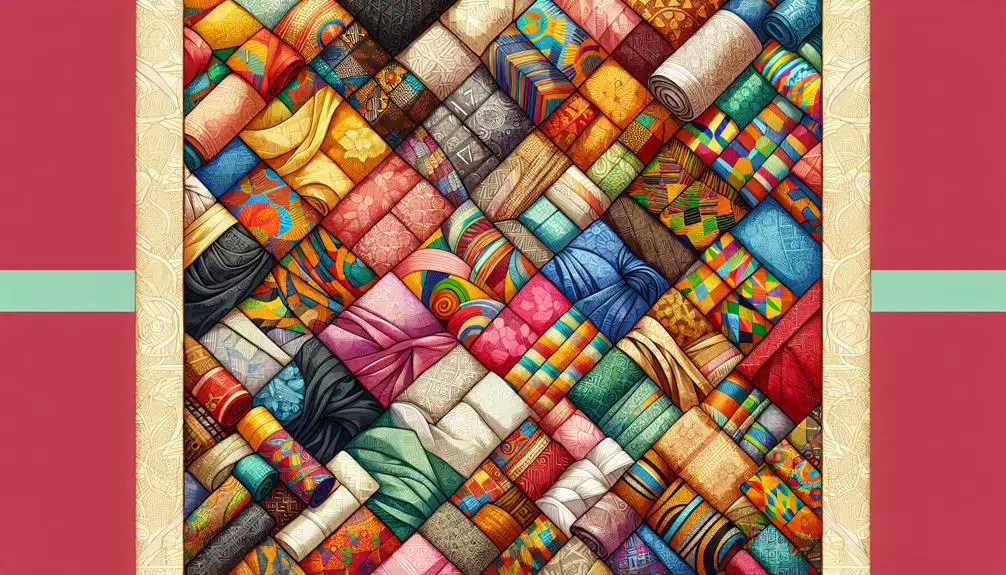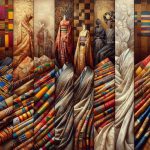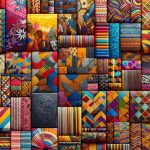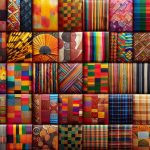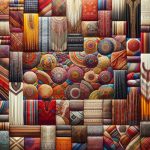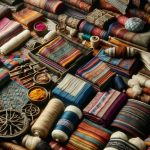Did you know that over 90% of traditional Indian saris are still made by hand? This statistic highlights how deeply embedded fabric craftsmanship is in cultural practices. You're about to explore how each fabric, from African Kente cloth to Japanese kimono, carries unique stories and traditions. These textiles don't just serve functional purposes; they are rich tapestries of history and creativity. Join the journey to uncover how fabrics bridge past and present, connecting diverse cultures through threads of meaning and artistry.
Table of Contents
Key Takeaways
- Fabrics like Indian saris and African Kente cloth carry deep cultural and symbolic meanings in their patterns, colors, and draping styles.
- Japanese kimonos and Andean textiles preserve traditional craftsmanship while adapting to contemporary fashion trends.
- European lace showcases intricate designs that reflect historical evolution and regional craftsmanship, maintaining relevance in modern high fashion.
- Regional textiles often symbolize social status, heritage, and cosmological beliefs through their unique designs and weaving techniques.
- Traditional and modern elements blend in global fabrics, ensuring they serve as cultural symbols connecting past and present.
Indian Saris
Indian saris, with their vibrant colors and intricate designs, have been a cornerstone of Indian culture for centuries. When you explore the art of traditional draping, you'll find that each region in India has its unique style.
For instance, the Nivi drape from Andhra Pradesh is vastly different from the Gujarati drape. These regional variations aren't just about aesthetics; they carry deep cultural significance, reflecting the heritage and traditions of their place of origin.
As you investigate further, you'll notice that modern trends have started to influence how saris are worn today. Designers are experimenting with fabrics, colors, and even the draping techniques.
You might see a blend of traditional and contemporary styles on the runway, making the sari a versatile garment suitable for various occasions. Despite these innovations, the cultural essence remains intact, serving as a bridge between the past and the present.
Understanding the sari's cultural significance requires more than just appreciating its beauty. It's about recognizing the history, the craftsmanship, and the stories woven into each piece of fabric. Mastering this knowledge allows you to appreciate the sari not just as a garment but as a symbol of cultural identity.
African Kente Cloth
Just like the Indian sari, the African Kente cloth embodies rich cultural heritage through its vibrant colors and intricate patterns. Originating from the Akan people of Ghana, this iconic fabric is more than just a textile; it's a profound expression of Ghanaian tradition.
When you look at Kente cloth, you're witnessing centuries of history and artistry woven into each piece.
Crafted meticulously by hand, Kente cloth showcases exceptional handwoven craftsmanship. Each strip of Kente is woven on a loom and then sewn together to form the final cloth. The vibrant patterns aren't merely decorative; they carry symbolic meanings rooted deeply in Akan culture.
Each color and design reflect specific themes such as royalty, spiritual purity, and social status.
For instance, gold in Kente signifies wealth and status, while blue represents peace and harmony. By understanding these symbolic meanings, you can appreciate how Kente cloth communicates messages and stories through its intricate designs.
When you wear or display Kente, you're not just showcasing a beautiful fabric; you're honoring a rich cultural legacy that celebrates the essence of Ghanaian heritage and identity.
Japanese Kimono
Often seen as a symbol of grace and legacy, the Japanese kimono beautifully embodies the essence of Japan's cultural inheritance. You can trace its origins back centuries, observing how it has evolved over time.
The kimono highlights traditional craftsmanship, where skilled craftsmen dedicate numerous hours to dyeing, weaving, and stitching elaborate patterns. This commitment guarantees each piece is a one-of-a-kind masterpiece.
In recent times, contemporary reinterpretations have injected new vitality into this ageless attire. Designers fuse traditional methods with modern styles, making the kimono more accessible to the younger generation while upholding its cultural importance. These adaptations have sparked a revival in its popularity, both within Japan and on a global scale.
To fully grasp the beauty of the kimono, consider these emotional focal points:
- Legacy: Every kimono serves as a physical connection to Japan's vibrant history and ancestral customs.
- Craftsmanship: The precise handcrafted process is a tribute to the artisans' expertise and dedication.
- Innovation: Modern adaptations guarantee the kimono remains pertinent and treasured in the contemporary fashion scene.
Andean Textiles
Andean textiles captivate with their intricate patterns and vibrant colors, reflecting centuries of cultural heritage. When you explore these textiles, you immerse yourself in a world where every thread tells a story. Rooted in Inca traditions, these fabrics showcase the sophisticated artistry of Indigenous craftsmanship. You can't help but be mesmerized by the vibrant colors—deep reds, rich blues, and striking yellows—that make each piece a visual feast.
Inca textiles weren't merely decorative; they held profound significance. Symbolic patterns were woven to convey everything from social status to cosmological beliefs. The geometric designs and animal motifs you see aren't arbitrary; they're imbued with meaning and history. For instance, the checkerboard patterns often symbolize duality and balance, reflecting the Andean worldview.
European Lace
European lace, with its delicate filigree and intricate patterns, stands as a testimony to centuries of refined craftsmanship and artistic evolution. Imagine the hands of skilled artisans meticulously weaving threads into masterpieces of elegance. Each piece of lace carries a weight of historical significance, reflecting the evolving tastes and fashion trends across different eras.
You'll be captivated by the intricate designs that lace artisans create. These patterns aren't just visually stunning; they symbolize the height of European fashion evolution. The journey from the lavish lace collars of the Renaissance to the delicate lace trims gracing modern couture speaks volumes about our cultural heritage.
Consider these evocative aspects of European lace:
- Timeless Beauty: The sheer beauty of lace, with its delicate craftsmanship, makes it a perennial favorite in high fashion and bridal wear.
- Cultural Heritage: Each region in Europe has its unique lace-making traditions, from the Venetian needle lace to the bobbin lace of Bruges, each with its own historical significance.
- Artistic Expression: Lace-making is an art form, where intricate designs serve as a canvas for creative expression, blending tradition with innovation.
Frequently Asked Questions
How Have Modern Technologies Influenced Traditional Fabric Production Methods Globally?
You've seen modern technologies revolutionize traditional fabric production through innovation. They enhance sustainability and cultural preservation, aligning with technological advancements. Embrace these changes to master the balance between tradition and cutting-edge techniques.
What Are the Environmental Impacts of Fabric Production Across Different Cultures?
You've got to take into account the environmental impacts of fabric production. Conduct an impact assessment and adopt sustainability practices. Understanding these across different cultures aids in reducing ecological footprints and promoting eco-friendly production methods.
How Do Global Trade Policies Affect the Availability of Traditional Fabrics?
Global trade policies can make or break traditional fabric availability. Trade restrictions can strangle supply chains, while textile innovation sometimes compensates. You'll find maneuvering these policies is essential for maintaining access to cultural fabrics.
What Role Do Fabrics Play in Contemporary Fashion Design Worldwide?
You'll see fabrics as the backbone of contemporary fashion design worldwide. Textile innovation drives new trends, while cultural appropriation sparks debates. Mastering these dynamics lets you appreciate the intricate balance designers maintain in their craft.
How Have Historical Events Shaped the Evolution of Fabric Use in Various Cultures?
You'd see how historical events have profoundly shaped fabric use. Cultural influences and historical significance dictate material choices, weaving techniques, and patterns, reflecting each era's unique story and technological advancements. This interplay enriches cultural heritage.
- Tetron Fabric for Marine Applications: Durability and Use Cases - June 18, 2025
- Tetron Fabric for Outdoor Furniture: Weather Resistance and Care - June 18, 2025
- Tetron Fabric for Wall Coverings: Style and Application Tips - June 18, 2025

